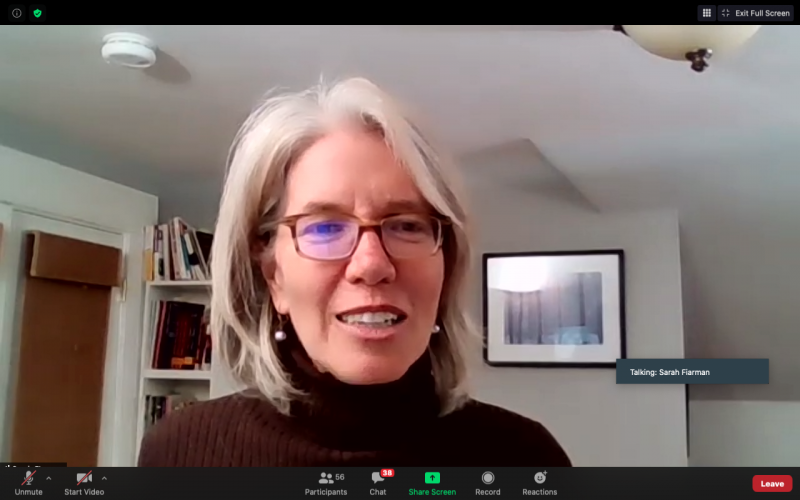‘Who, me?’: ORR holds conversation on racism and bias
What does it mean to be racist?
When author and educator Sarah Fiarman was in fifth grade, her African-American neighbors came home to their Long Island suburb one day to find someone had burned a cross in their yard.
“I knew that to be racist means [to have] a lot of hatred in your heart,” she told around fifty Tri-Town residents at the Old Rochester Regional school district’s second Black History Month community conversation on Feb. 25.
The conversation — called “Who me, racist?” — explored the unconscious racial bias that we all absorb regularly, and what we can do about it.
Fiarman explained that what seemed to be a black and white binary to a fifth grader — either you’re racist, which means you’re a bad person with bad intentions, or you’re not — is not so clear cut.
While teaching at grad school, for example, Fiarman once told a colleague that a group of Black students in her class was being disruptive by having side conversations while she was talking.
So the colleague told her to watch the white students at the next class, because they were probably doing the same thing.
“I heard him say that, and my first reaction was to feel so defensive,” she said.
But sure enough, at her next class, she saw the white students having side conversations too.
“I realized that without being aware of it, I [was] interpreting different students’ behavior differently due to race,” she said. “I was about to take action that was racially biased...it was a really eye-opening moment for me.”
“I think there are a lot of white educators like me who have good intentions,” she added. “And we are simultaneously doing harm.”
During the conversation, participants broke into smaller discussion groups and watched a video summarizing the myriad ways that Black people suffer discrimination.
“The research is pretty clear that in our society, we are all absorbing unconscious racial biases,” said Fiarman. “We actually can’t choose to be exempt.”
Discrimination in everything from the G.I. bill to “redlining”, or blocking loans and other services to low-income areas, has led to segregated communities that reinforce racial biases.
“As a result, we have segregated social lives,” she said. “75% of white Americans don’t have any friends of a different race. This is in 2016!”
Fiarman found another example of bias in animated M&M characters on TV.
“This isn’t the most egregious, but the marketing people who made the legs and arms of M&Ms made them all white,” she laughed. “I mean, these are chocolate candies!”
“The marketing people were probably white,” she noted. “It just perpetuates — what’s normal? ‘Normal’ is white.”
“I didn’t learn about any of that in school,” she added.
So what can we do about it?
Fiarman suggested a few action items, notably educating yourself and helping to educate others.
Participants proposed adding anti-racist books and materials to school libraries, and teaching students about the history of discriminatory policies and infrastructure and how it still affects us today.
Teaching students to recognize, acknowledge, and talk about bias would be another step forward, some noted.
“We’re not going to solve the problem of racism in 90 minutes,” Fiarman said. “But I hope that people are going to leave with some ideas and insights.”















